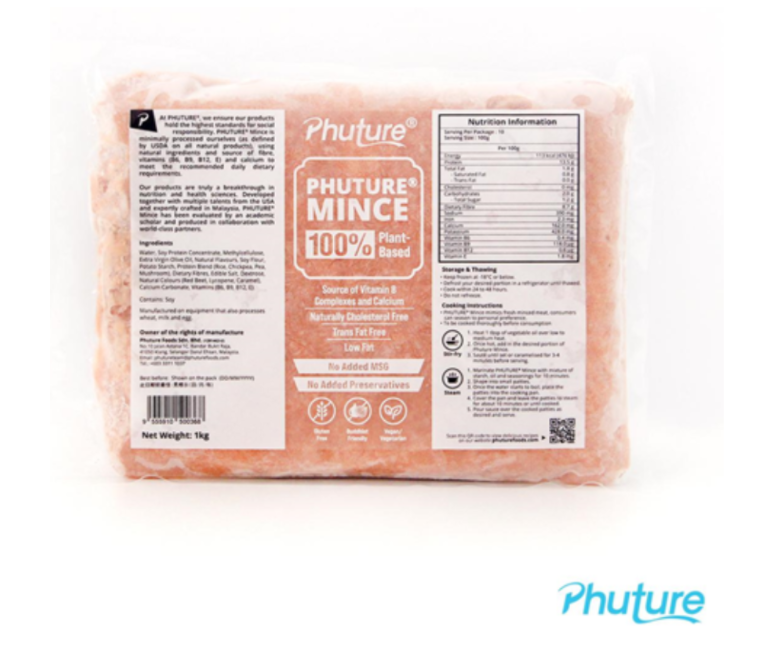
Groundbreaking Report Spotlights 7 Asian Countries That Could Reshape Plant-Based Meat
It’s a classic question: What are plant-based meats made of?
This curiosity is natural from consumers, but an eye-opening report released today by The Good Food Institute Asia Pacific highlights how it’s also a serious question that raw-material suppliers, investors, entrepreneurs, and policymakers should be asking themselves as demand for alternative protein continues to soar across Asia.
Titled Asian Cropportunities: Supplying Raw Materials for Plant-Based Meat, the new report—which was compiled with help from Singapore-based research firm Asia Research & Engagement—shines the spotlight on fourteen alternative protein ingredients, as well as seven Asian countries that are well-positioned to expand their cultivation. After reading the report’s illuminating conclusions, visionaries from throughout East and Southeast Asia may find themselves asking “Am I sitting on a gold mine and just need to start digging?”
Going Beyond Traditional “Mock Meat”
In China, plant-based meat substitutes, often referred to as “mock meat” or “vegetarian meat,” were first recorded in the Tang dynasty one thousand years ago. Notably, since Chinese plant-based meats were born out of Buddhist traditions and have primarily served the vegetarian inclinations of some of the estimated 245 million national followers, replication of the taste and texture of meat was never pushed past a relatively basic level. In fact, being too similar to real meat could be deemed non-religious.
Even today, these traditional products still fall into the well-established industry category of “soy products” (豆製品). They serve a very specific purpose and their appeal is viewed as limited to certain communities. In order for plant-based meat to reach its full market potential in Asia, the sector must break free of its association with traditional mock meats, which are expected to be sold at a low price point and carry historical image baggage.
The use of new and innovative ingredients may play a key role in differentiating the next generation of plant-based meat products and broadening their appeal to larger audiences. Thankfully, as producers and consumers, we have barely scratched the surface of the plant kingdom’s potential.
“Moving from four crops that feed over 70 percent of humanity right now to five crops isn’t going to make much difference. Nor is having ten crops. You need a whole selection of crops that are best suited to the climate now and in the future. We need to move forward fast but on a broad front, viewing diversity as a strength rather than an inconvenience.” – Dr. Sayed Azam-Ali, Crops for the Future
The Gold Mines
The industry-wide analysis featured in Asian Cropportunities clearly shows that the vast majority of current plant-based meat products are reliant on only two main crops—soy and wheat. While innovative applications of these two ingredients have ushered in a range of successful products, relying exclusively on such a small handful of crops may mean that we are overlooking the massive potential of locally sourced ingredients in Asia that could reduce costs and reap huge rewards for domestic producers.
When suppliers and producers think beyond ingredients traditionally used in plant-based meat, they often find themselves eyeing countries like Myanmar. That country has a rich history of cultivating nutritious and sustainable crops, including chickpeas, mung beans, potatoes, and sunflower seeds, for both domestic consumption and export to their neighbors in China, India, and beyond. However, only in recent years have these humble ingredients taken on a new level of significance—as desirable raw materials that could further accelerate the growth of plant-based meat across Asia.
As an example, among the nations analyzed in Asian Cropportunities (which includes China, Thailand, Vietnam, and more), Myanmar accounts for the vast majority—97 percent—of chickpea production. Chickpeas are one of the ingredients that have been hailed by food-industry analysts as a “game changer” for alternative protein, and chickpea protein has already started to appear in products like PHUTURE Mince, a plant-based version of traditional minced meat produced by Singapore-based PHUTURE Foods. With the rise of these modern applications, Myanmar’s domination of chickpea cultivation means the country has an opening to assert itself as a plant-based meat ingredient supplier to the world.

features chickpea protein as one of its ingredients
By contrast, in a wealthy city-state like Singapore, where arable land is in short supply but market demand is high, the “cropportunities” may instead lie in intensive cultivation and development of fermentation-based mycoprotein, or lion’s mane mushroom—which has a naturally meat-like texture and an enviably healthy nutritional profile. Such resource-efficient ingredients, which can be grown indoors or vertically, could help The Lion City become less reliant on food imports and achieve self-sufficiency goals.
As a large and heterogeneous region, Asia is uniquely primed to capitalize on the shift towards alternative proteins. Between East and Southeast Asia’s rich agricultural landscapes, expansive infrastructure and manufacturing power, world-renowned innovation hubs, and unparalleled market size, local producers now have the ability to source a nearly unlimited range of ingredients, process them in new and innovative ways, and manufacture the next generation of plant-based meat; all in the same corner of the world. To achieve that goal, all that is required is for each part of the region to lean into what they do best.
Start Digging
Driven in part by rising fears of animal-borne diseases and demand for natural products—both of which have accelerated amid the Covid-19 pandemic—interest and enthusiasm for alternative proteins has never been higher. During this year of extraordinary uncertainty, Asia Pacific-based companies focused on alternative proteins like plant-based meat have still managed to raise more than USD $230 million in funding to accelerate their growth, according to industry analysis by Michal Klar and Green Queen.
This recent shift in public opinion represents a massive opportunity for raw-material suppliers and manufacturers across Asia, but how high the sector can soar—and who will benefit from that growth—will be largely dependent on how strategically an expansion of plant-based meat is rolled out. Armed with this influential new report, readers will be better positioned to capitalize on the lucrative opportunities presented by a fast-moving societal shift towards alternative proteins. We look forward to seeing what they will bring to the table.
Download Asian Cropportunities: Supplying Raw Materials for Plant-Based Meat here.

